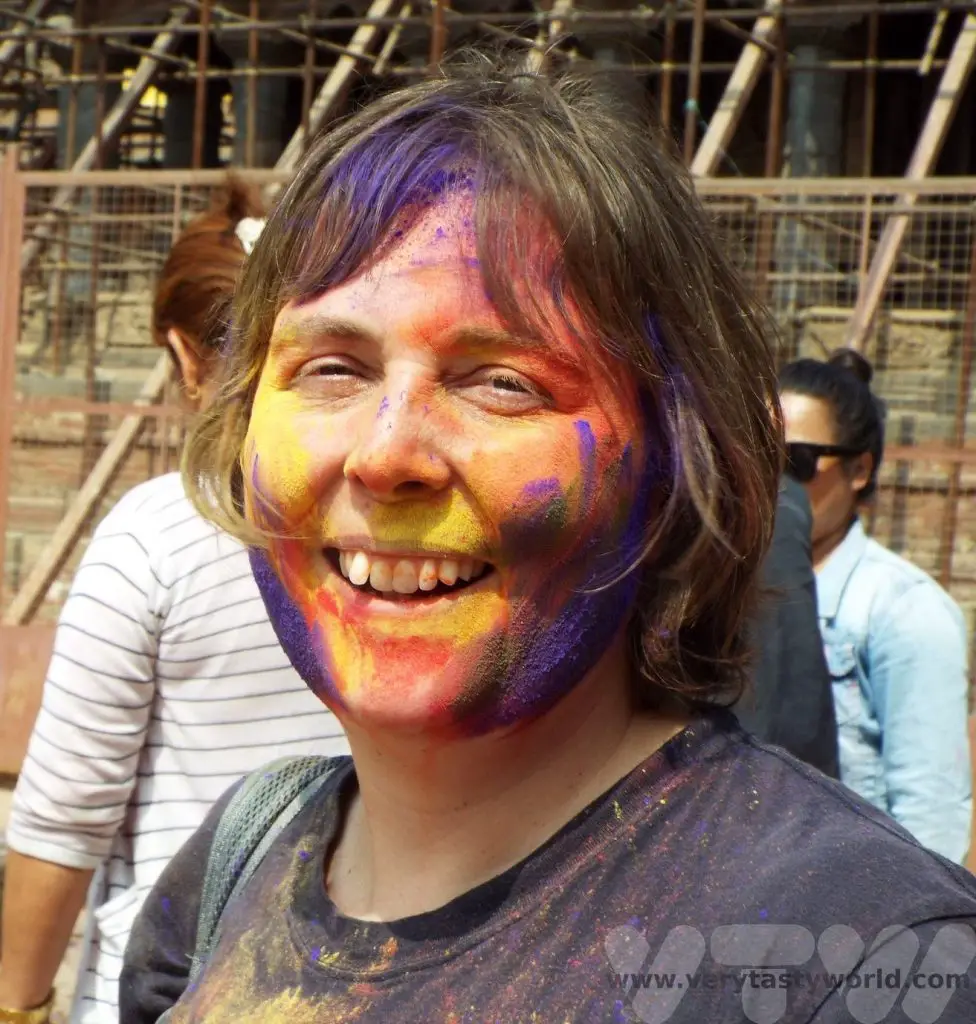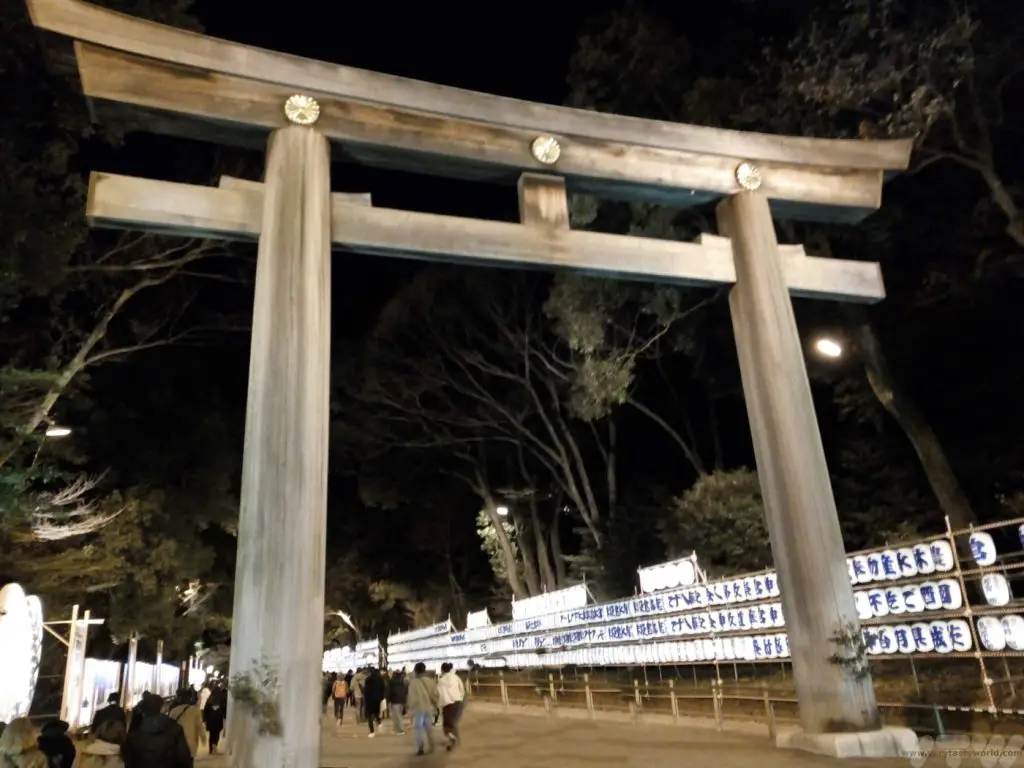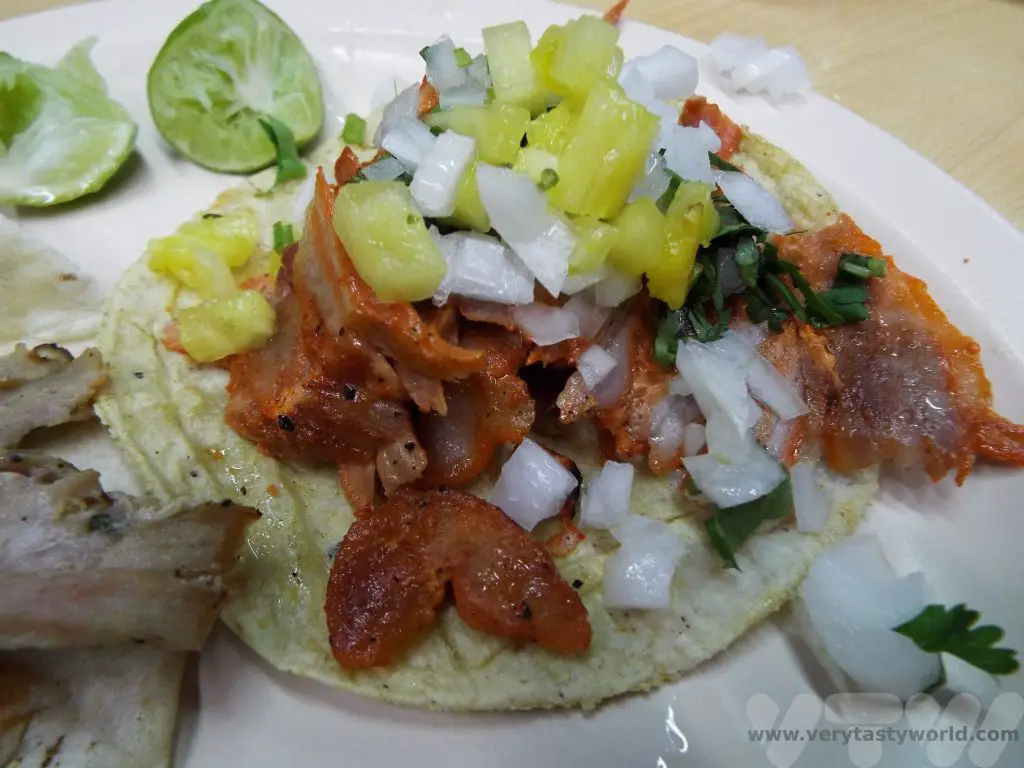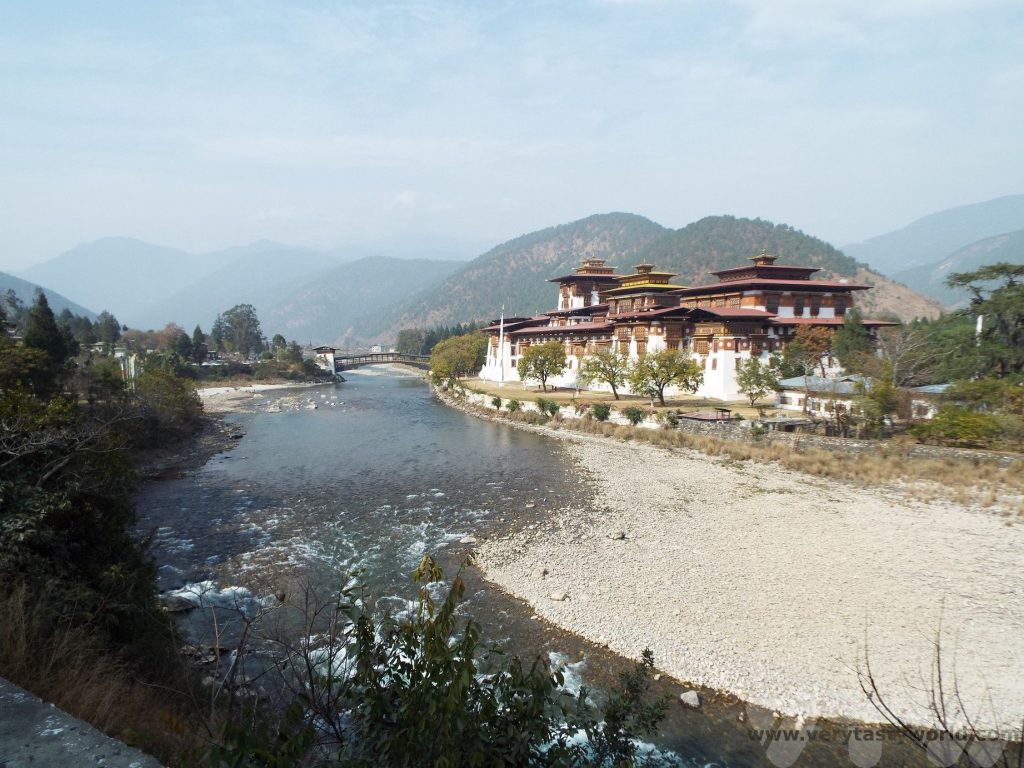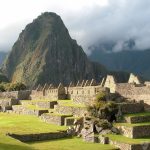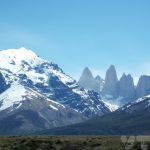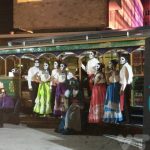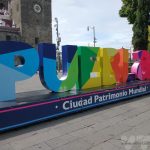Home » Posts tagged 'Campeche'
Tag Archives: Campeche
Day of the Dead in Campeche
Our trip to Mexico was a long time coming. Originally planned for March 2020, we had to cancel the trip a week before we were due to fly, due to the pandemic, and rearranged for November 2020. And then cancelled that due to the pandemic. Finally, we managed to make the trip two and a half years later. But we decided to time the new journey to coincide with Mexico’s Day of the Dead – Dia de los Muertos – celebration which takes place in late October/early November and are very glad that we did. We were to spend Day of The Dead in Campeche.
We travelled on buses through Mexico, starting in Mexico City, visiting Puebla, Oaxaca, San Christobal, and Palenque before arriving in Campeche. The journey then proceeded to Merida, Chichen Itza and finally Cancun. Bus journeys are cheap and convenient but distances can be long.
Campeche is around six hours from Palenque or just a couple of hours from Merida if you are travelling on the bus.
Welcome to Campeche – Aaaarrrr!
Campeche is the capital city of the state of Campeche and lies on the Gulf of Mexico looking out over the azure sea. It is known for its colourful city centre and history of piracy.

History of Campeche
Campeche’s name derives from the Mayan phrase, Ah-Kin-Pech, which apparently means ‘the place of snakes and ticks’, which doesn’t sound at all inviting. We can confirm that no snakes or ticks were encountered during our visit.
The Spanish landed at Campeche in 1517 on St Lazarus’s day – the 29th July – and named the location Lazarus. The conquistadors began their occupation of the Yucatan peninsula, consolidating it in 1541-2, when they founded the first enduring Spanish councils at Campeche and Merida. Due to its coastal location Campeche became an important port. Valuable goods such as gold and silver passed through the town but, because of this, it became a target for local pirates. In 1663 the Sack of Campeche, led by pirates Christophe Myngs and Edward Mansvelt, involved a mass of pirates from around the Caribbean who got together some 14 ships and 1400 men and plundered the port.
In 1685 Dutch pirate Laurens de Graaf launched an attack on the city and killed a significant proportion of the population. As a result of these horrific raids, the authorities decided to fortify the central zone and built an extensive wall around it.
Campeche became recognised as a city in 1744, the first in the region. The community developed something of a rivalry with those in nearby Merida, although both cities eventually worked together to try to form an independent state of Yucatan. However, they were integrated into Mexico in 1849.
Campeche’s fortunes have waxed and waned over the years. The city is incredibly photogenic with its well-preserved colourful buildings and pirate legacy and as a result it has attained UNESCO status. It isn’t one of the most popular destinations for tourists, partly because there are many other places to visit on the Yucatan peninsular, but we recommend spending some time in Campeche if you get a chance.
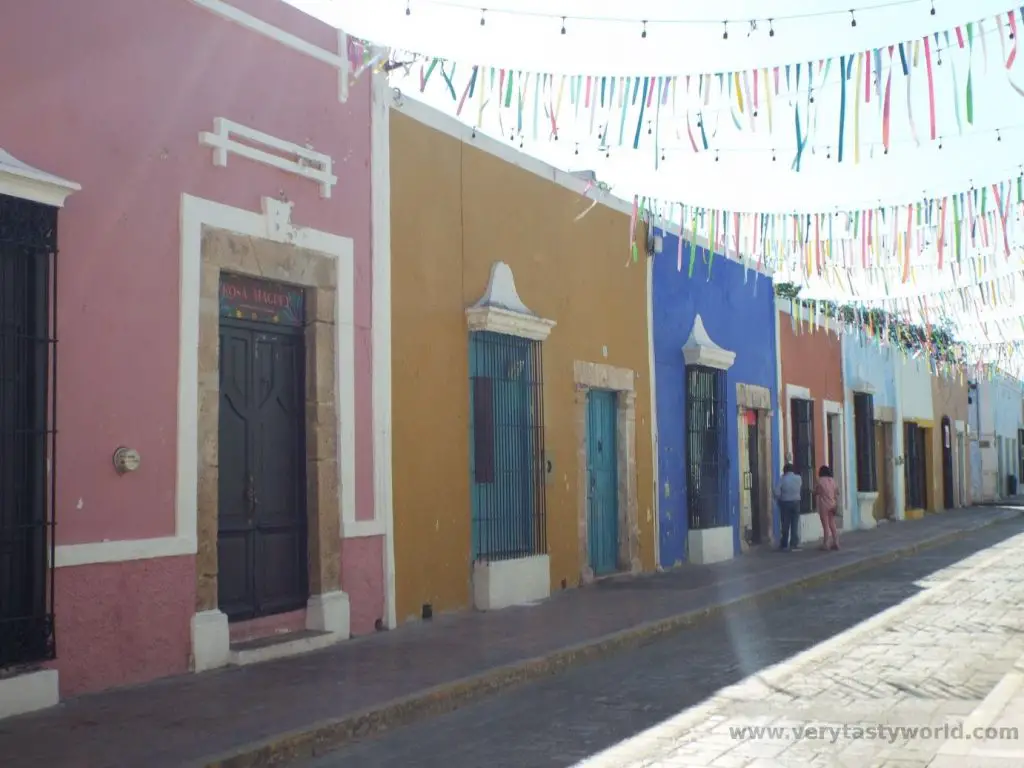
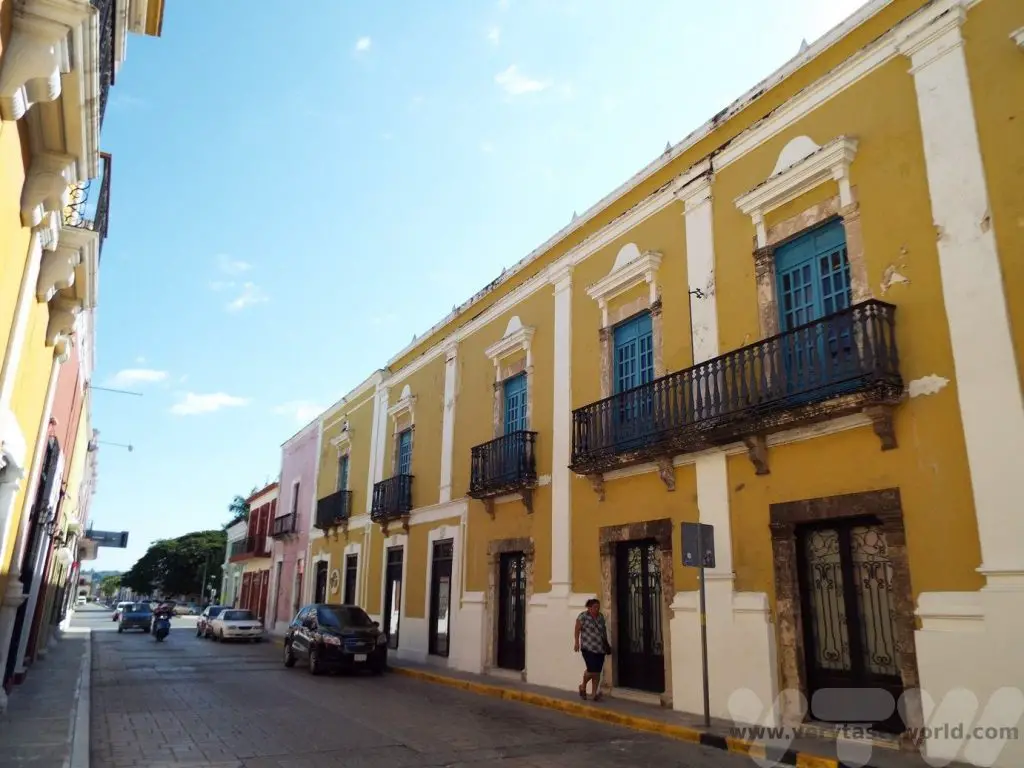
Things to Do in Campeche
There are plenty of walking opportunities, whether strolling along the Malecon walkway, looking out to sea, taking in the sights from the top of the fortified walls, or wandering through the colourful streets.
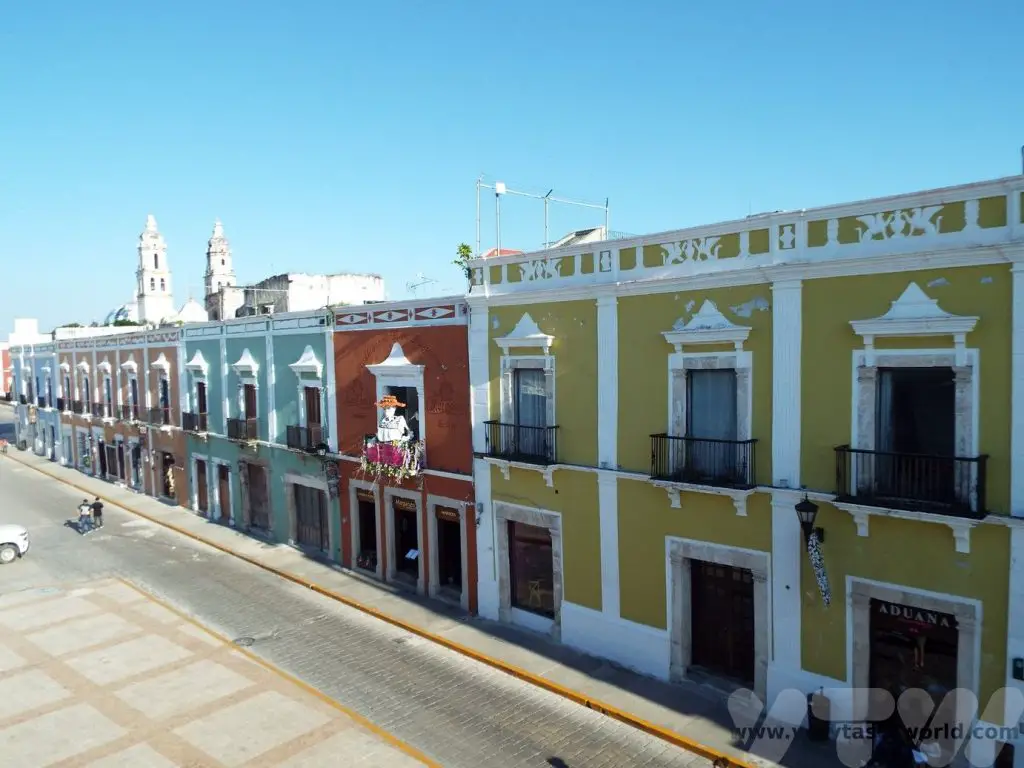

As well as walking along the walls, there are a couple of museums located in two of the bastions which are located at opposite ends of the wall closest to the sea.
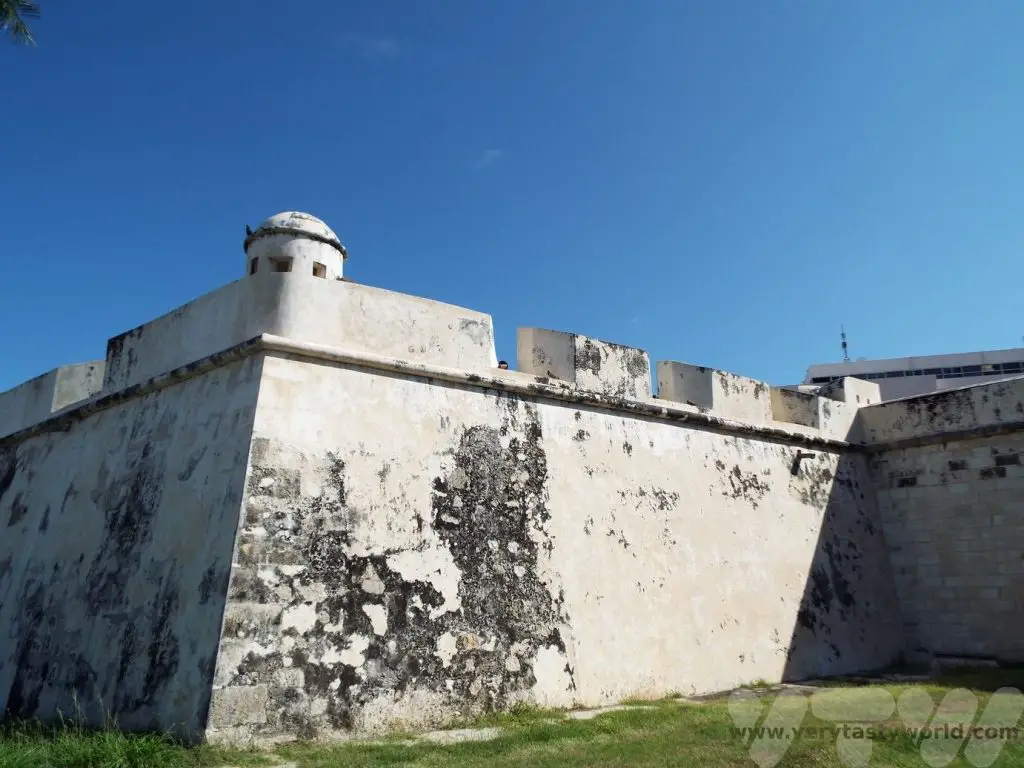
As with many cities, we find the tourist information centre to be a useful source to discover the local attractions. The friendly staff were happy to help us get acquainted with Campeche and suggested places to visit.
Pirate Museum
Documenting Campeche’s history as a port city, this small museum showcases information and artefacts with a focus on understanding its fortunes at the hands of the pirates over the years.
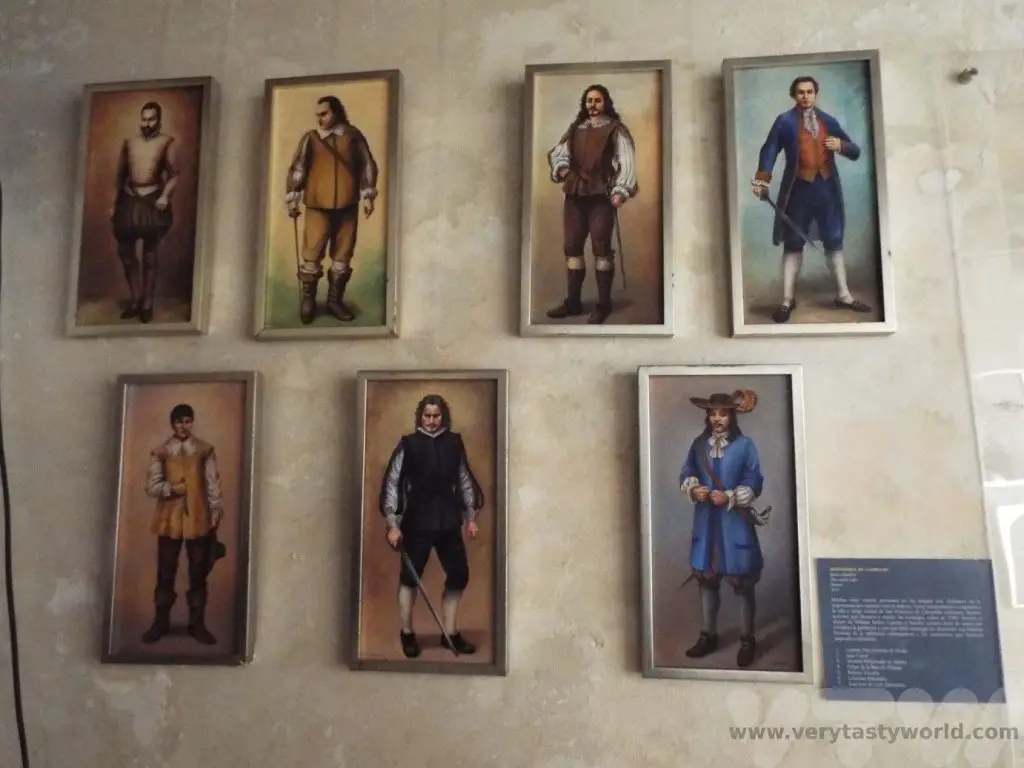
It is a very honest exhibition and dispels some of the romantic myths about pirates and piracy. Although films such as Pirates of the Caribbean have given us the impression of swashbuckling buccaneers, the real pirates who attacked Campeche were often society’s outcasts – marginalised and brutal.
Interestingly, Sir Francis Drake, viewed by the English as a heroic explorer who circumnavigated the globe, was despised by the Spanish as a ‘privateer’, a person who engaged in maritime conflict. Although perhaps it’s not really that surprising – the English and Spanish were fierce enemies at that time and many of the attacks by pirates were sanctioned by the state as ‘commerce raiders’ to undermine Spanish authority in this region.
And, naturally, the museum has a bunch of creepy mannequins in the dungeon.
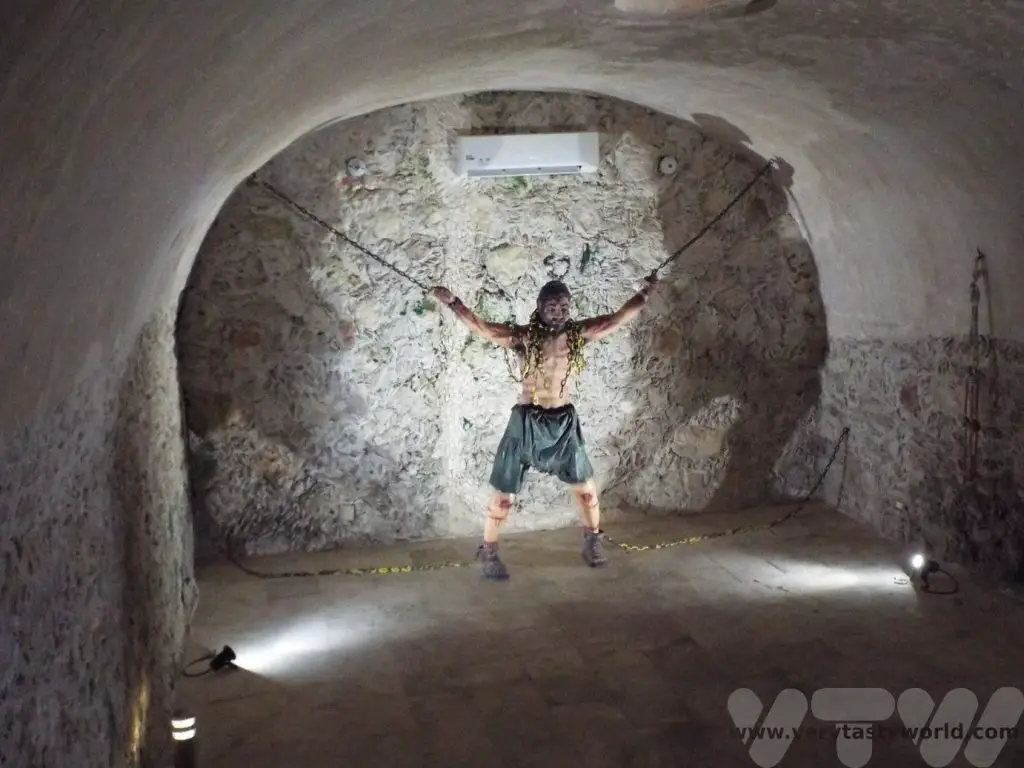
Don’t forget to head out to the city walls where you can see some of the cannon that defended Campeche.
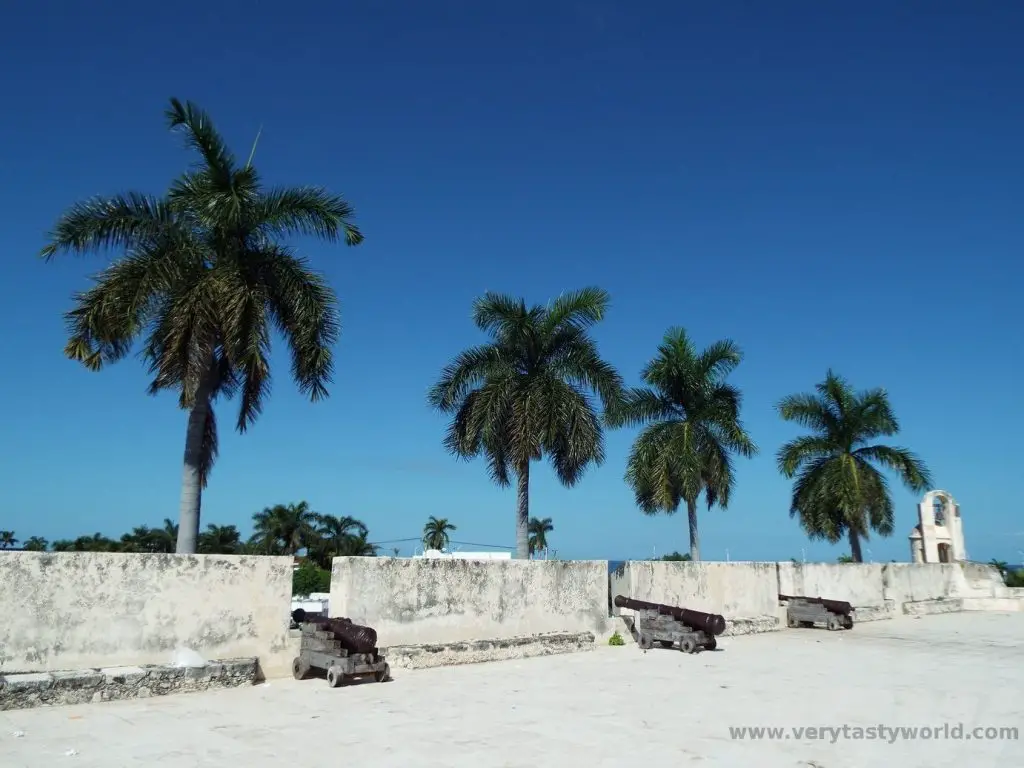
Museo de La Arquitectura Maya
This small but interesting museum on Baluarte de la Soledad houses a number of archaeological artefacts that have been found in the region. Exhibits are in English and Spanish. It was particularly interesting to learn about the writing systems of the Mayan people.
The highlight exhibit is the elaborate and beautiful mask of the God K’wiil.
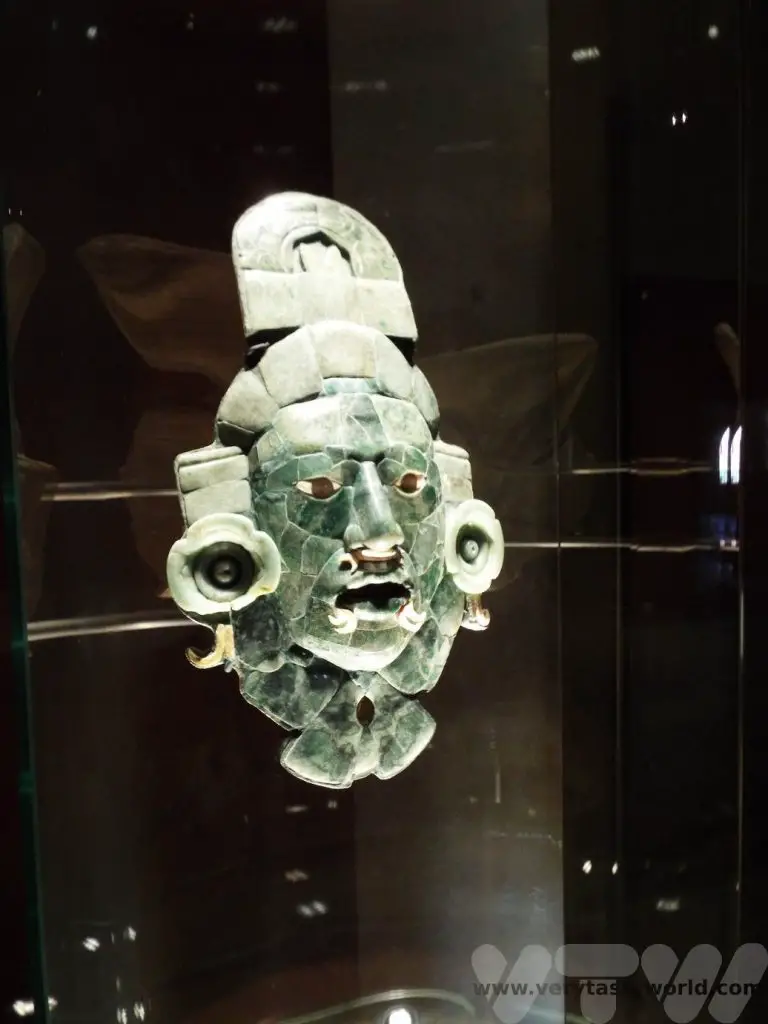
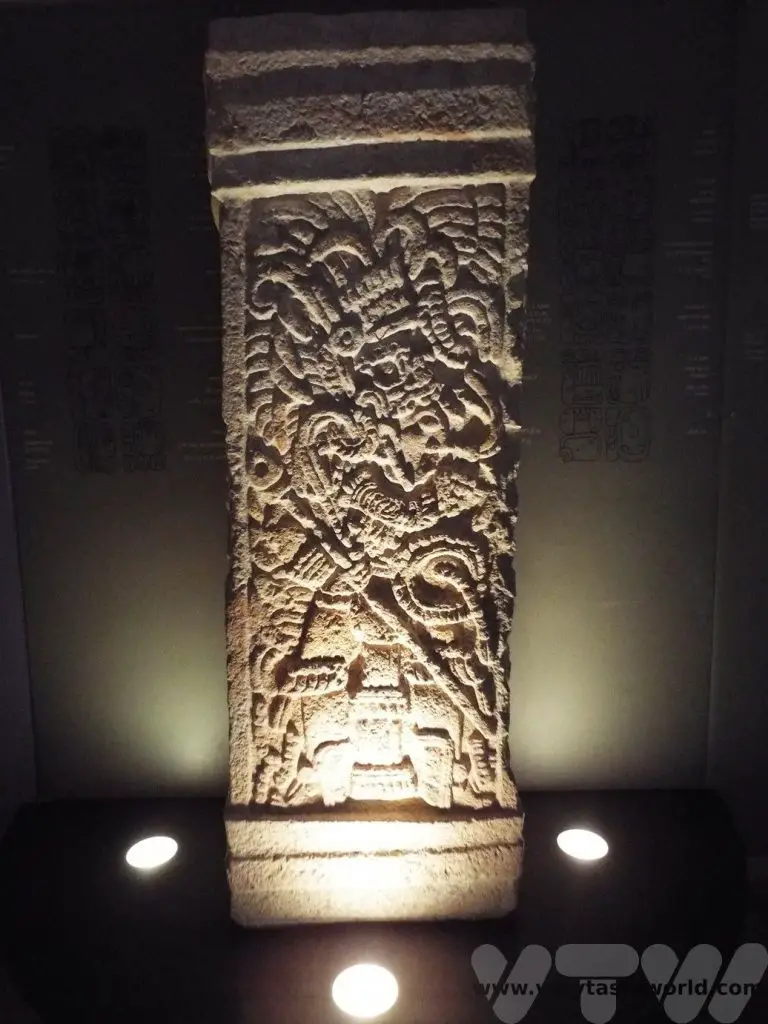
Make sure you climb up onto the wall at the end of your visit to get some fantastic views of the city in one direction and the Gulf of Mexico in the other.
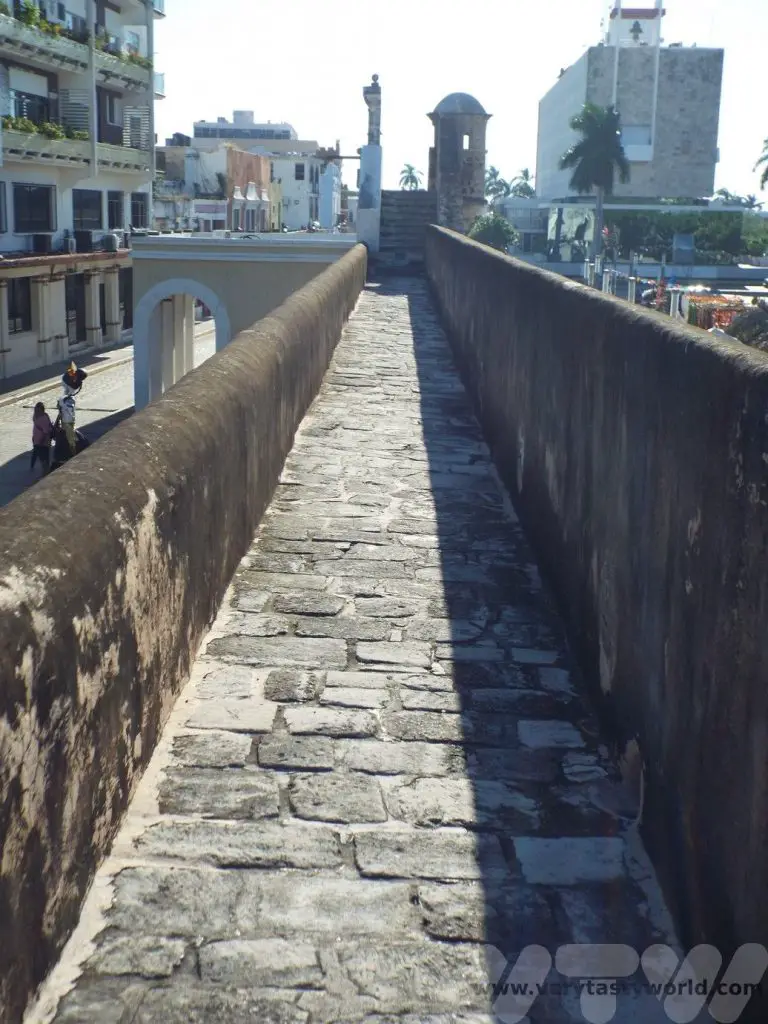
The Cathedral
The cathedral is located at the eastern end of the Plaza de la Independencia and is the most important church in the city. Construction started in the 16th century, soon after the Spanish settlers arrived. The cathedral has been expanded and embellished over the centuries. It has two impressive bell towers and a stone façade.
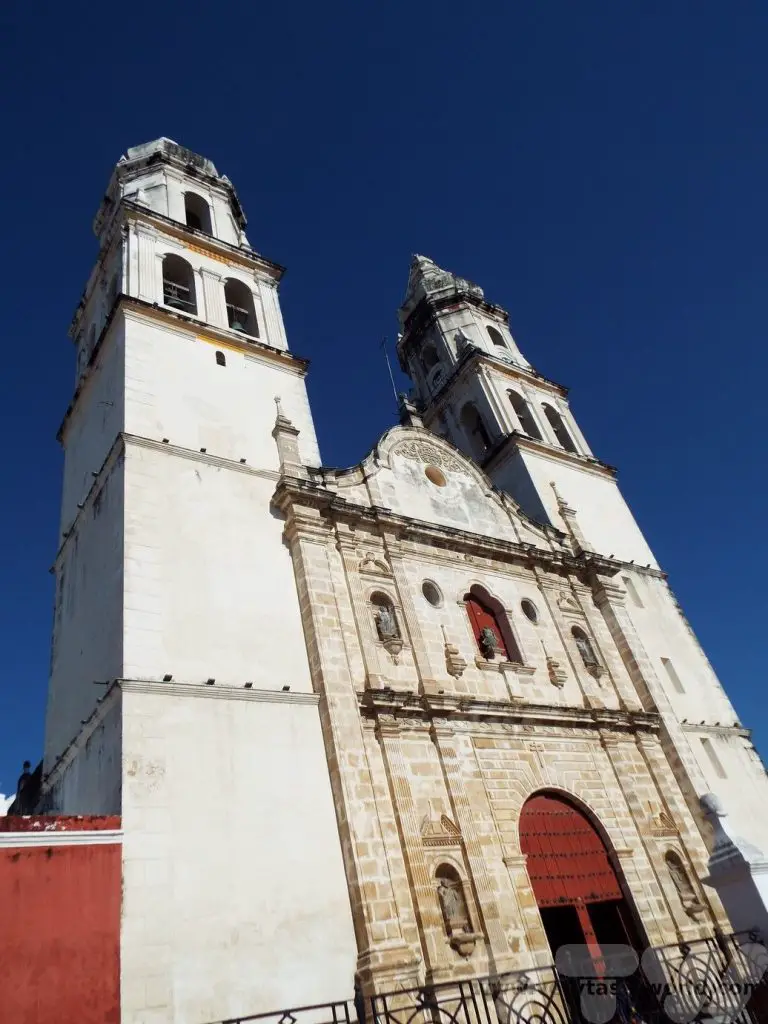
The Sea Promenade
With its location right on the Gulf of Mexico Campeche’s seafront doesn’t have pristine sandy beaches, so isn’t ideal as a seaside destination. But Malecon de Campeche offers a 7km waterfront path and makes for a lovely walk looking out to the deep blue sea.
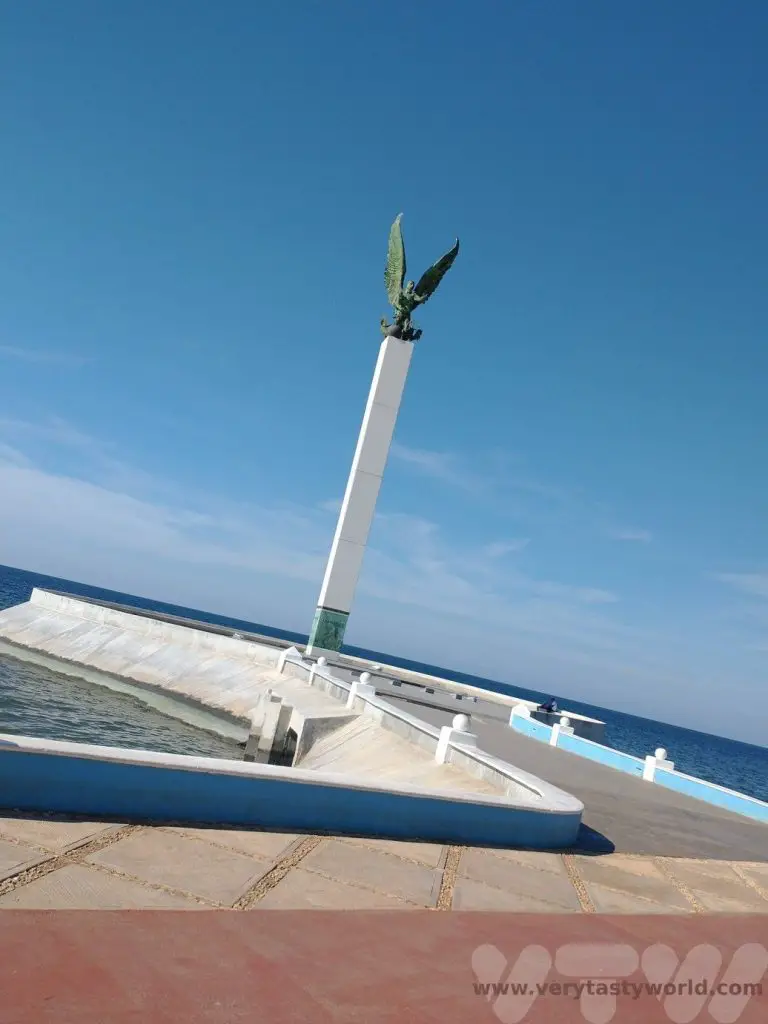
Campeche Food
Being located right on the coast there is plenty of seafood to enjoy in Campeche. Prawns are very popular. There are plenty of restaurants in the zona centro to choose from.
We enjoyed battered prawns with coconut and mango salsa and prawns with x’catic sauce. X’catic are a type of chilli which are long and thin and a pale green colour when ripe. They are commonly used in the Yucatan area and one of the specialities is x’catic in a cream sauce. While the chillies have a kick, the cream sauce mitigates some of the heat. And the sauce has an unusual blue-green colour.
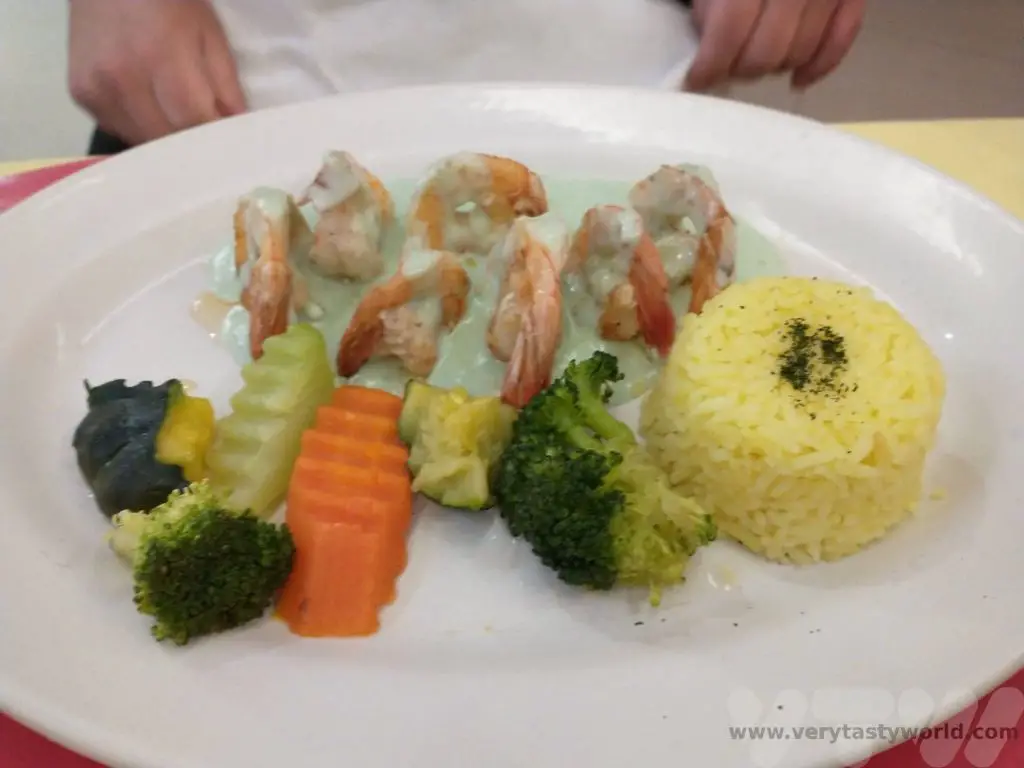
Day of the Dead in Campeche
We were lucky to be visiting Campeche during the Day of the Dead. This festival takes place on the 1st and 2nd November each year but preparations for the celebrations start much earlier and it is likely that the famous Day of the Dead parades will take place on the Saturday or Sunday before.
Day of the Dead is a celebration for families to remember and commemorate the lives of their ancestors. The origins are slightly unclear but it is thought that they are a combination of the indigenous commemorations of ancestors with Christian traditions; the timing of the celebration aligns with Halloween/All Saint’s Day. The Mayan people believe that death is simply another element of life.
In the time leading up to Day of the Dead relatives will visit the graves of their ancestors and will tidy them and prepare for the festival. Some may even exhume the skeletons of their relatives to clean their bones for up to three years after death. Food will be offered to invite their loved ones to visit. The dead will arrive on the 1st November and return the following day.
Day of The Dead Ofrenda
In the days leading up to the celebration, families and businesses will set up ofrenda. These are like alters which are highly decorated and lay out offerings to invite their deceased relatives to visit them.
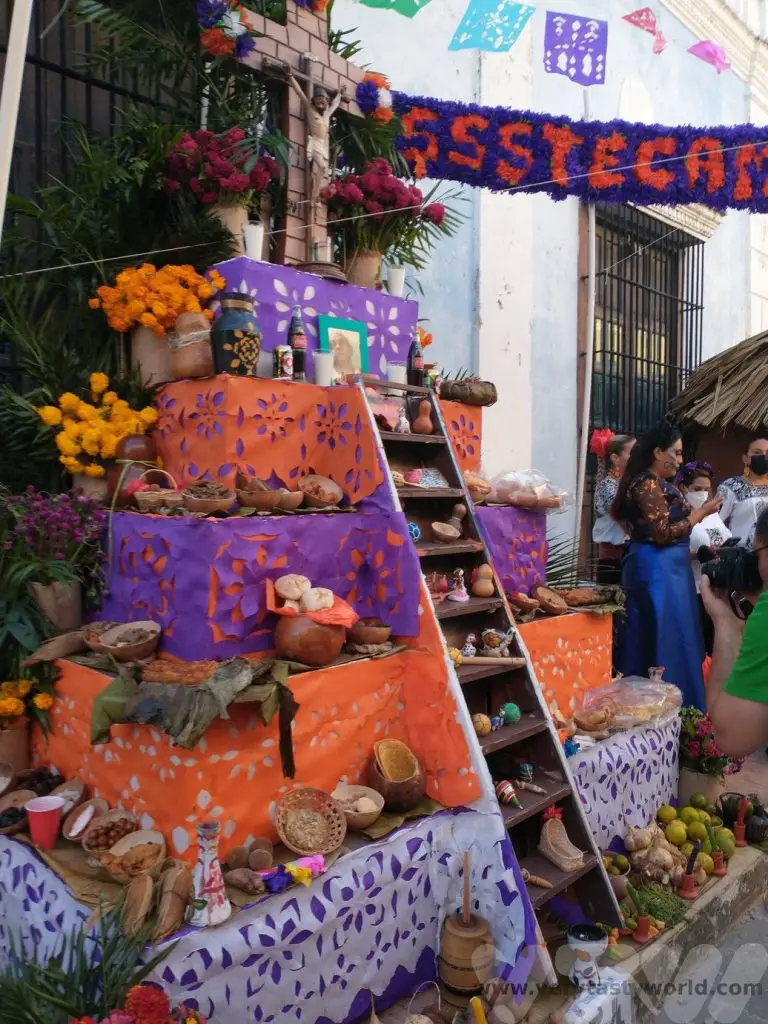
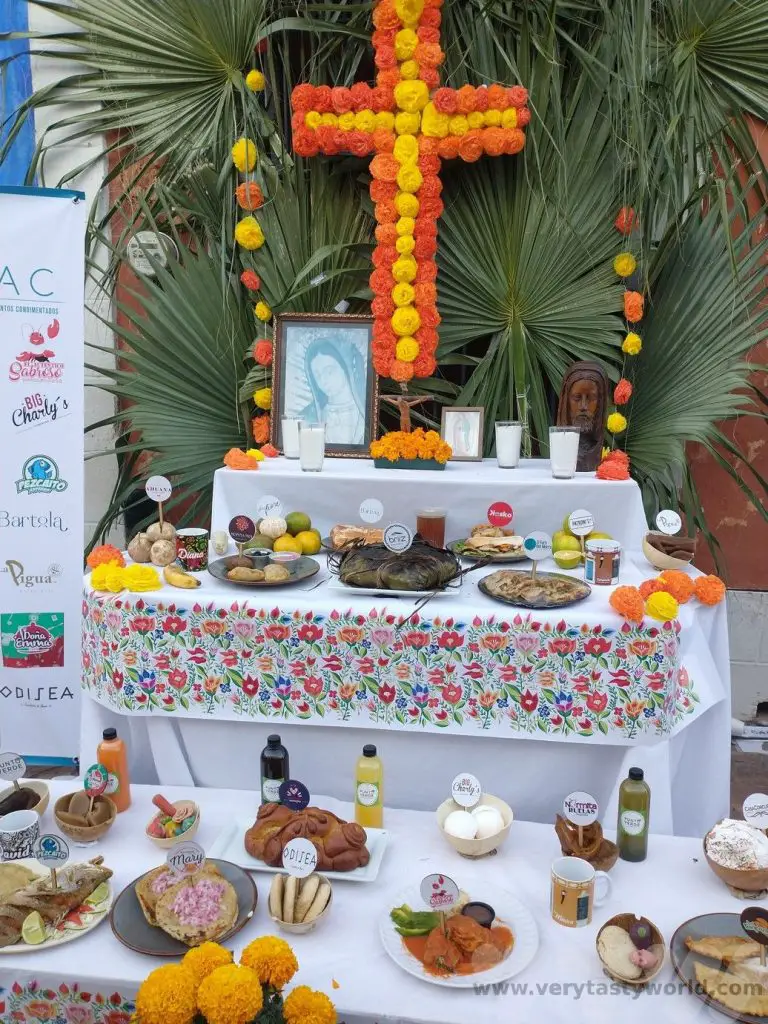
The food offered is real but it is rotated every day and replaced with new offerings. The previous day’s items are eaten by the family so as to ensure that food doesn’t go to waste.
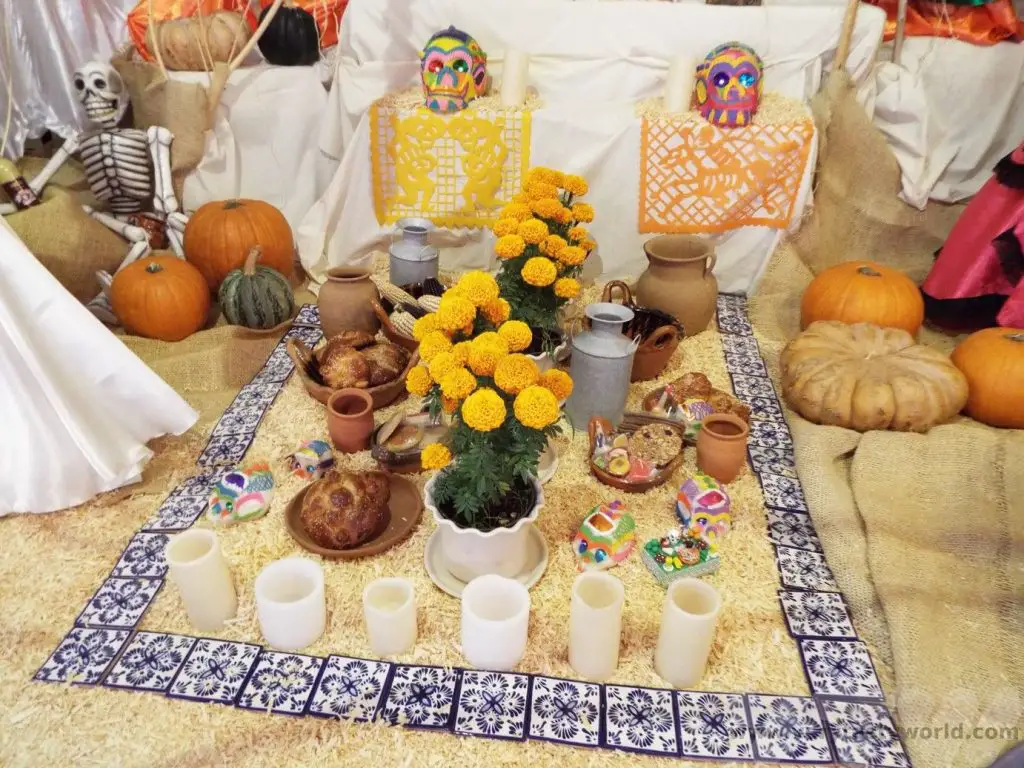
There is special Day of the Dead bread, known as Pan de Muertos. The central bread roll represents a skull and the surrounding sections of the bread symbolise the rest of the body.
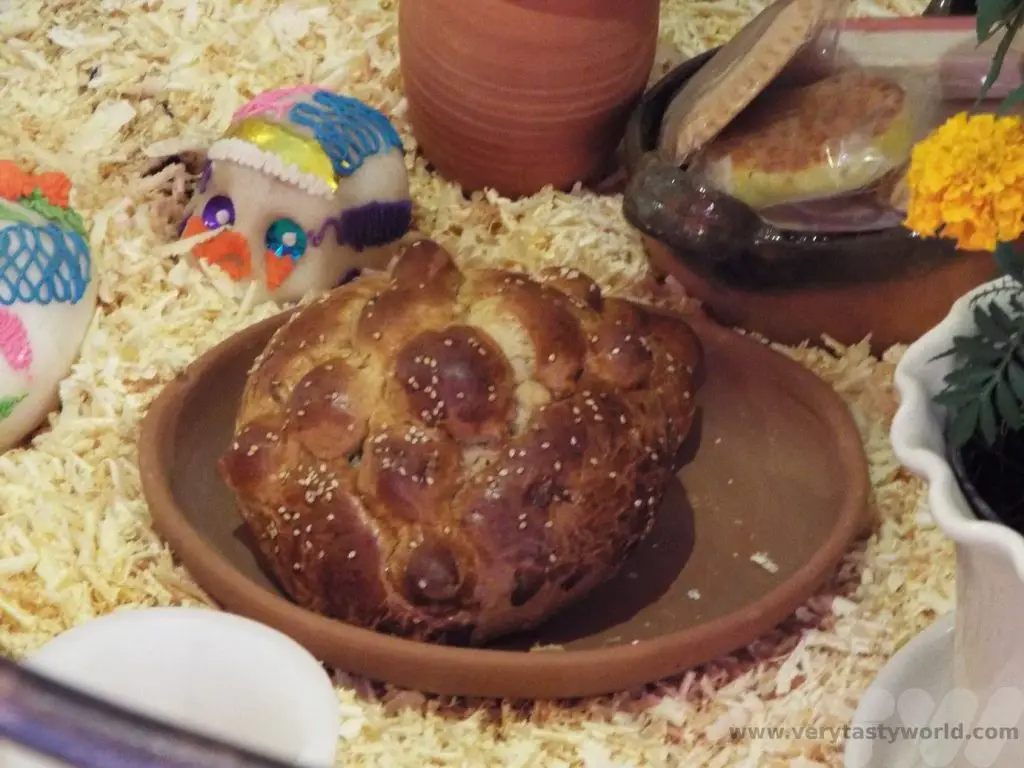
Marigolds are an essential part of the ofrenda. We saw fields of marigolds as we travelled through Mexico. The flower represents the fragility of life and its orange hue provides a colourful addition to the ofrenda.
Additionally, photos of ancestors may well be on display. And ofrenda are not restricted to humans. People also remember their pets and offerings are made for those as well.
Sugar skulls are a traditional sweet eaten during the festival. These are pure sugar but it is possible to buy chocolate ones as well. They make lovely souvenirs.
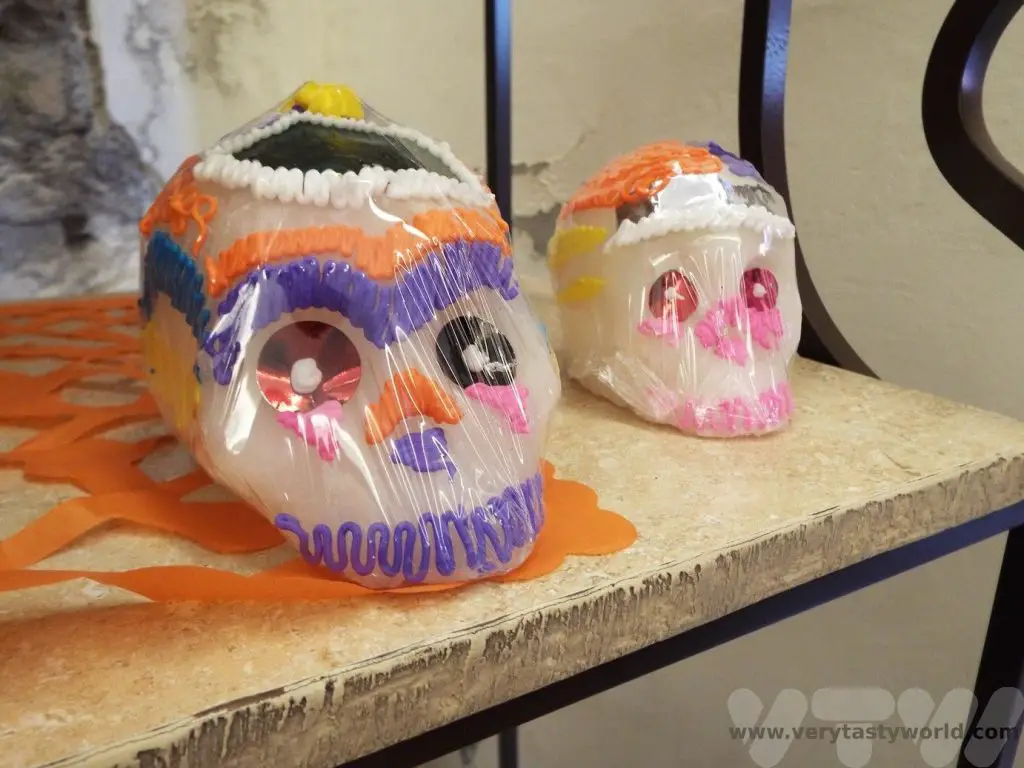

Day of the Dead in Campeche – The Celebration
Throughout our journey across Mexico in the days leading up to Day of the Dead, we would see homes and businesses preparing for the celebration. Every hotel and restaurant had decorations and ofrenda set up.
The parades in the big cities such as Merida or Oaxaca are very famous and will generally draw large crowds. We were actually delighted that we were able to join the celebrations in a smaller city. Later on, in Merida, we were able to see further ofrenda and some more celebrations but the main parade was in Campeche.
We arrived on the bus in the late morning and made our way to Calle 59 to get our bearings. This is the main street that is usually buzzing with bars and restaurants but during the afternoon we were able to see the ofrenda being set up.
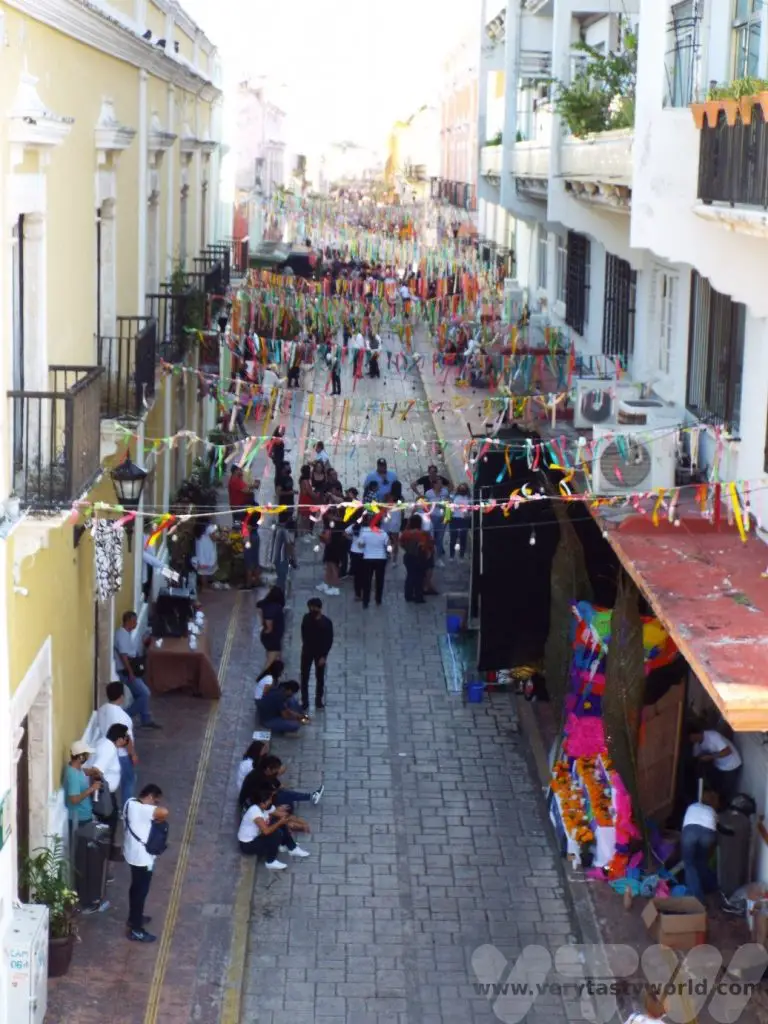
The city decorations reflected the pirate theme.
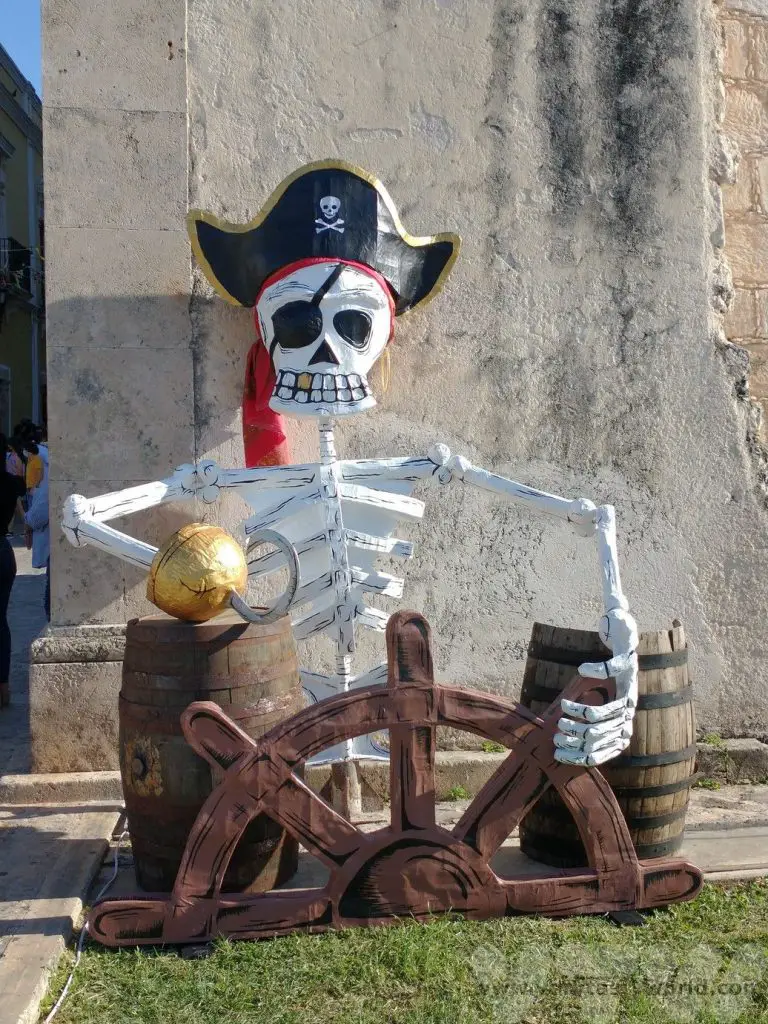
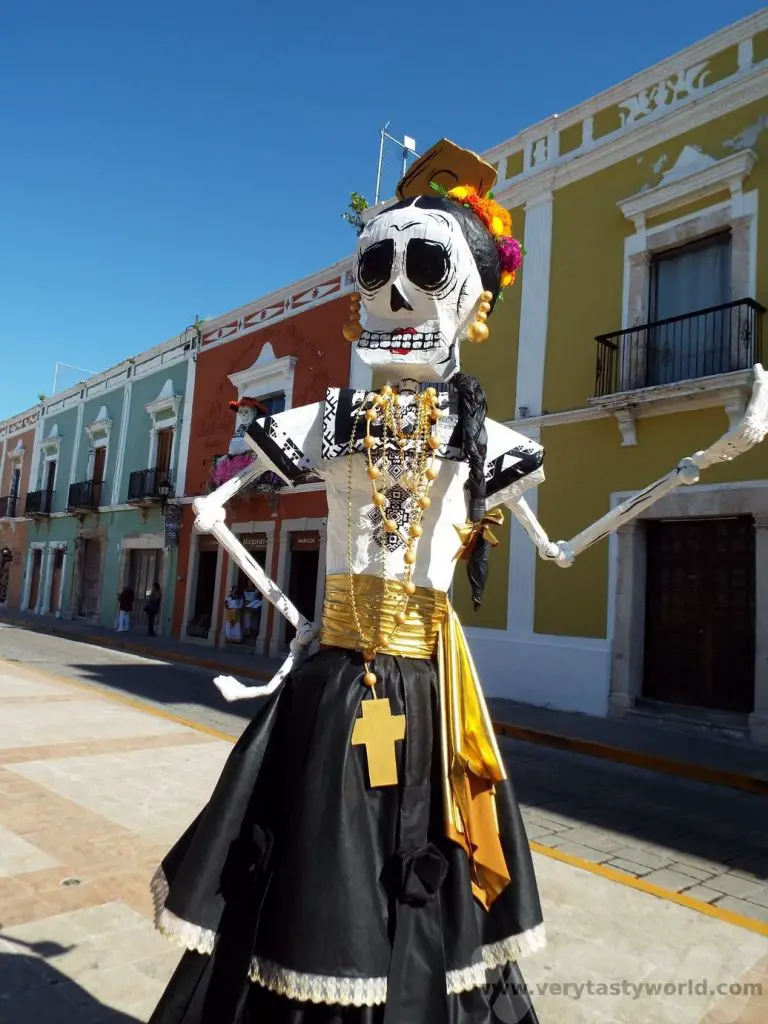
Costumes are an essential part of the celebration. Everyone was happy to pose for photos. It is also possible to get your face painted in full Day of the Dead make-up for a small fee.
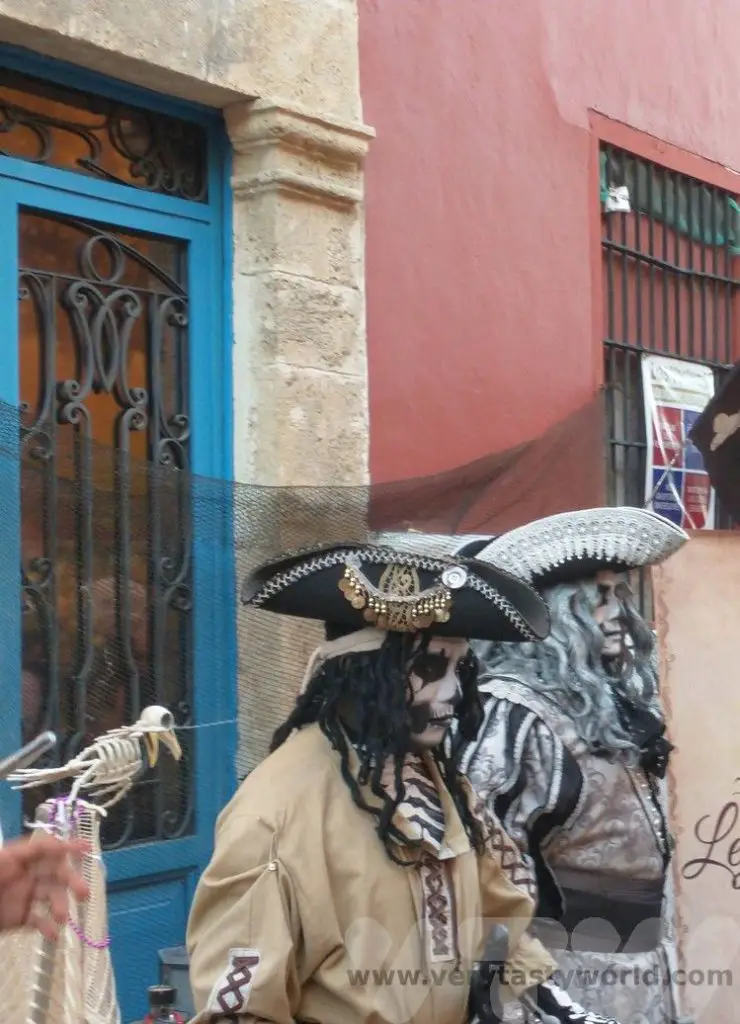
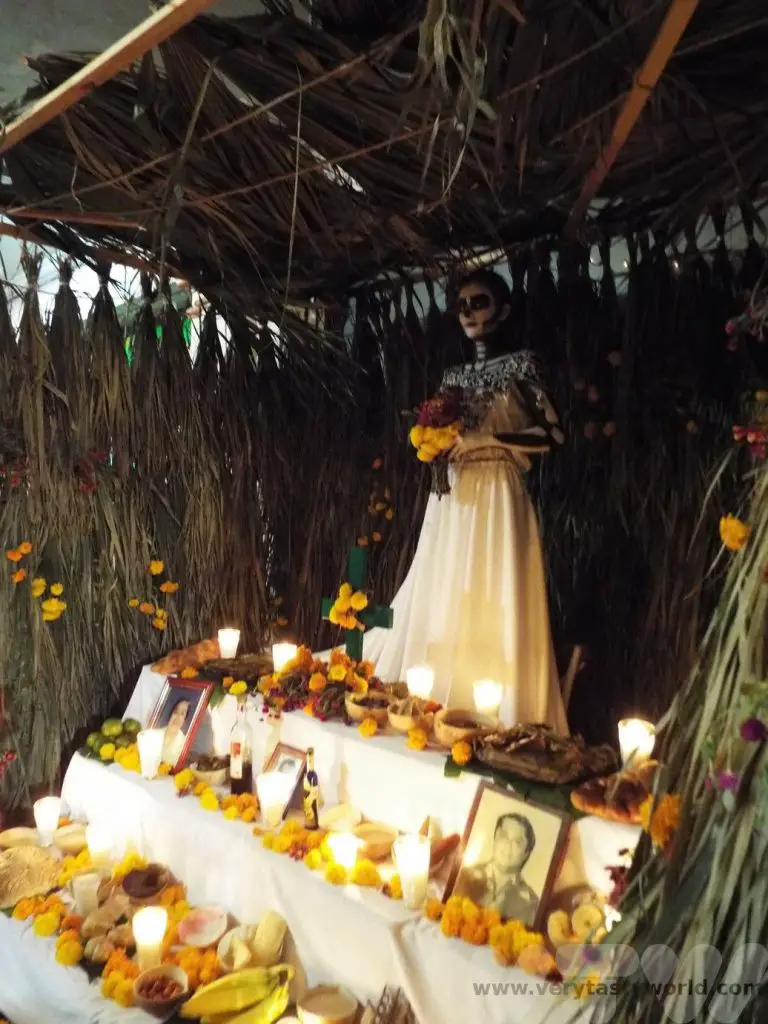
Later in the evening the party started. We enjoyed watching the local children perform a dance with great enthusiasm.
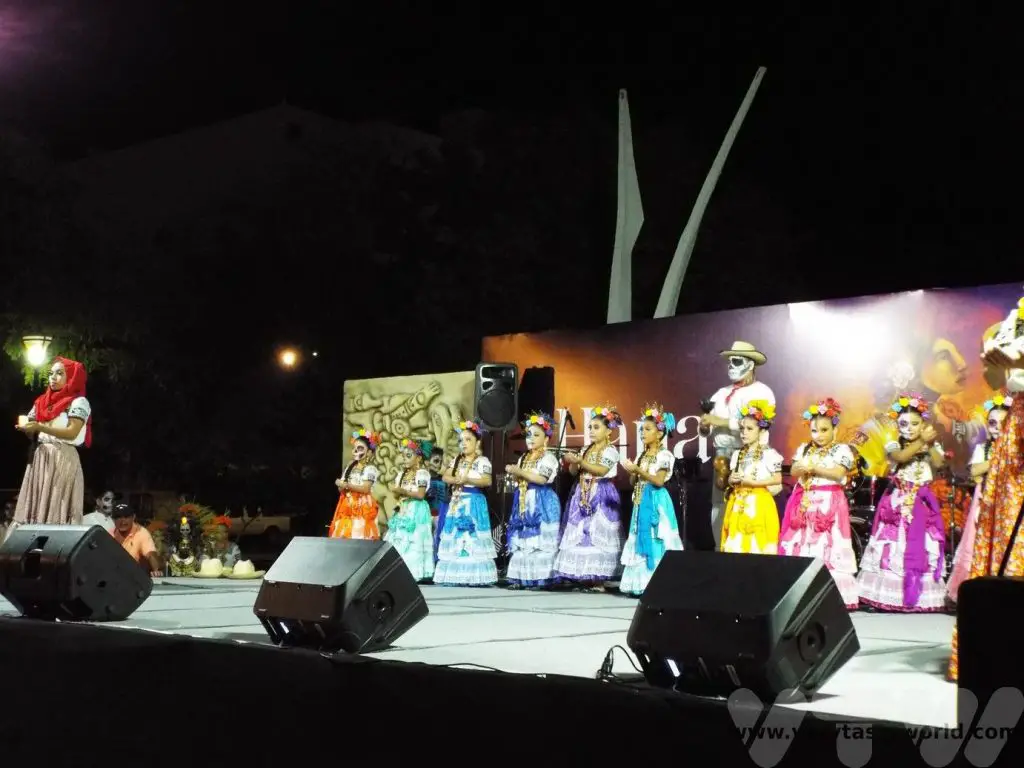
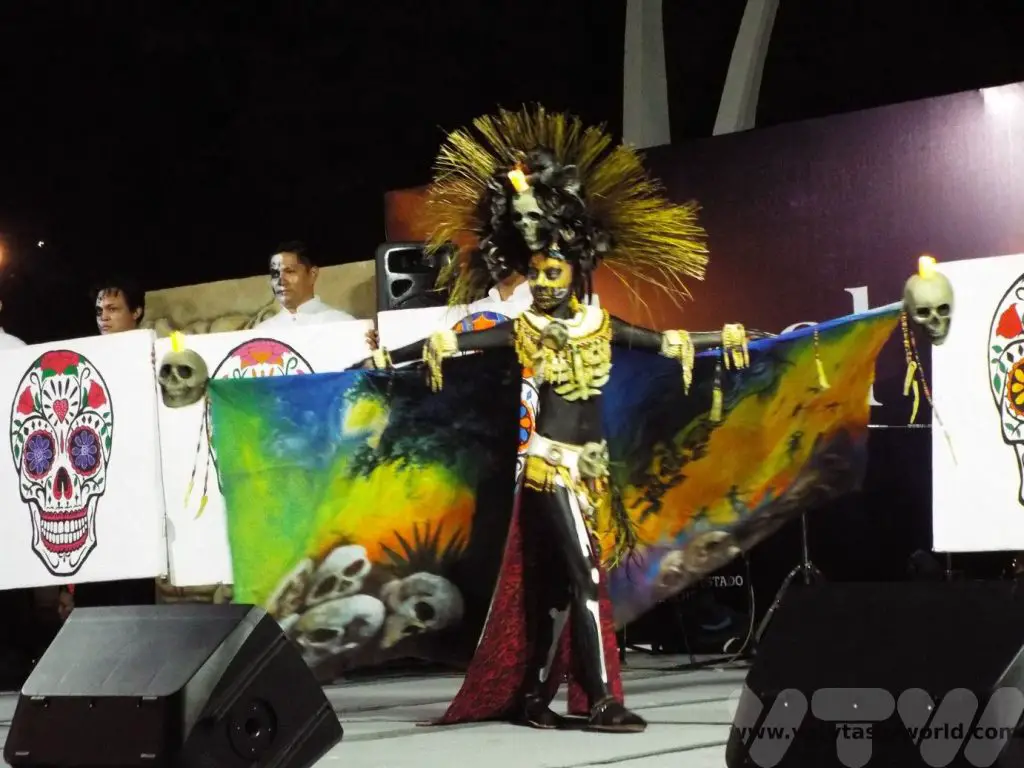
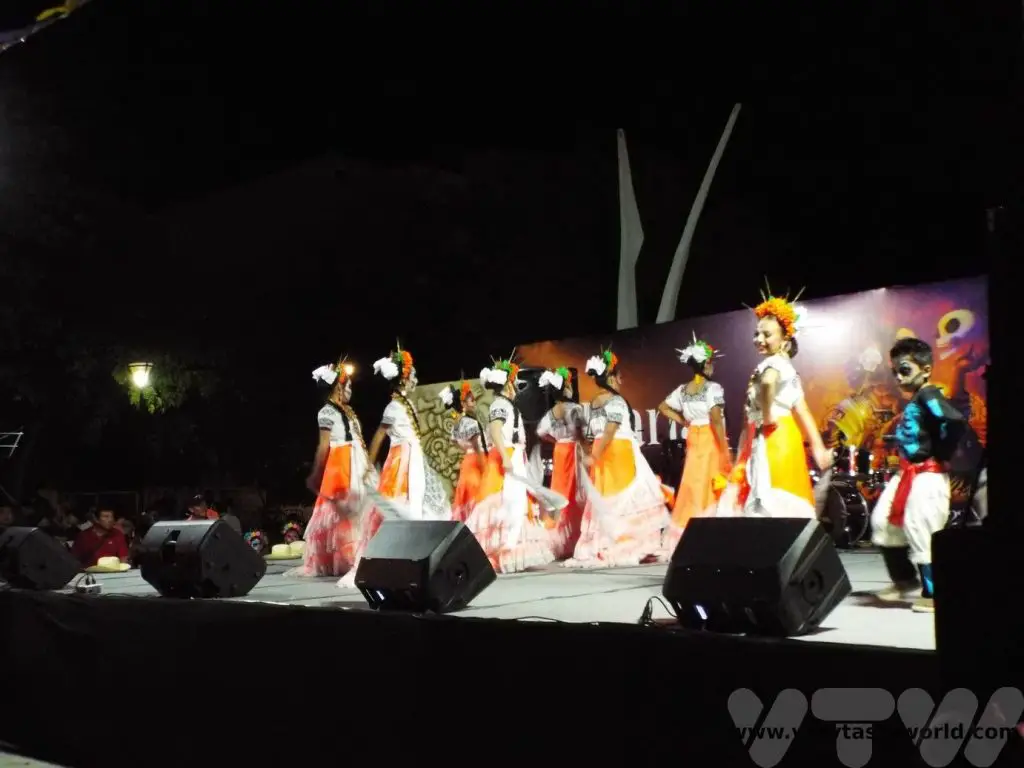
There was dancing…
…and, of course, the parade.
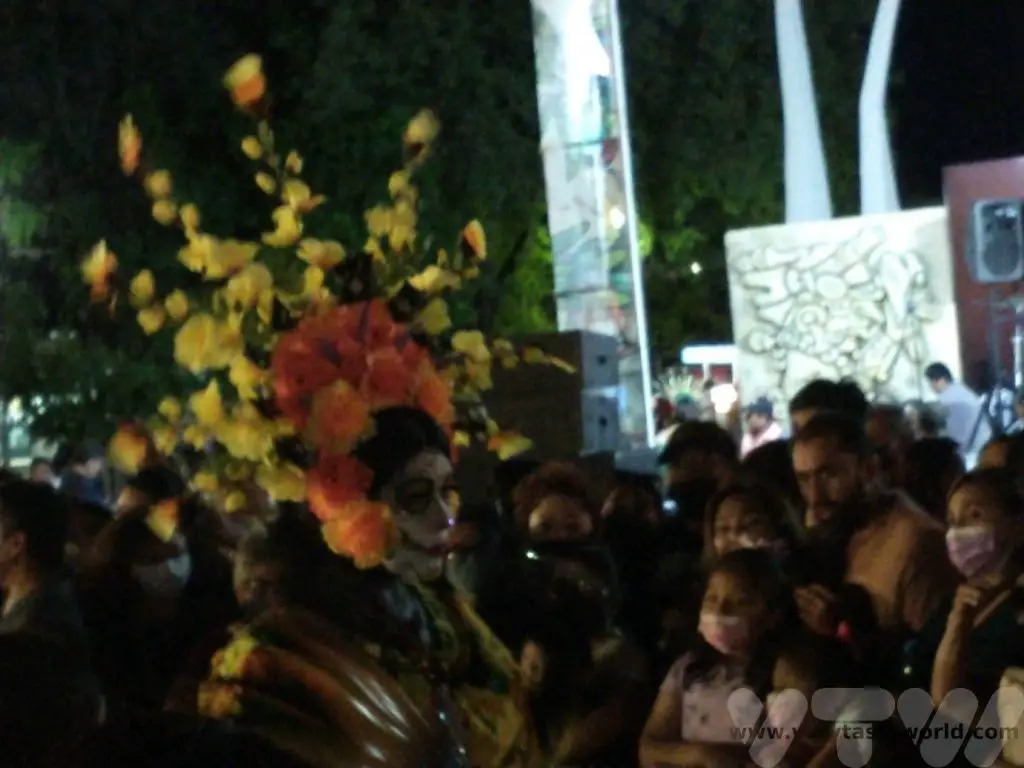
What was lovely about celebrating in Campeche was that it was a much smaller festival – it felt more intimate because it didn’t have large crowds. Above all else, it was such a happy occasion. Everyone was welcome and joining in the celebration was encouraged. We had lots of conversations with friendly locals, who were very pleased to see us.
Even the dogs took part – this little one had possibly the cutest costume ever!

Traditional Food of the Day of the Dead
Along with the food offered to ancestors at the Ofrenda, there are some dishes that are traditionally eaten during the festival.
The most important Day of the Dead food in Yucatan is mucbipollo. It is made with corn bread and shredded chicken, wrapped in a banana leaf and cooked in an underground pit known as a pib. The Mayan word ‘muk’ from mucbipollo means ‘to bury’.
It has a crispy exterior and is delicious but is quite stodgy and very filling. The best street vendors will have queues of hungry punters waiting in line to enjoy a portion.
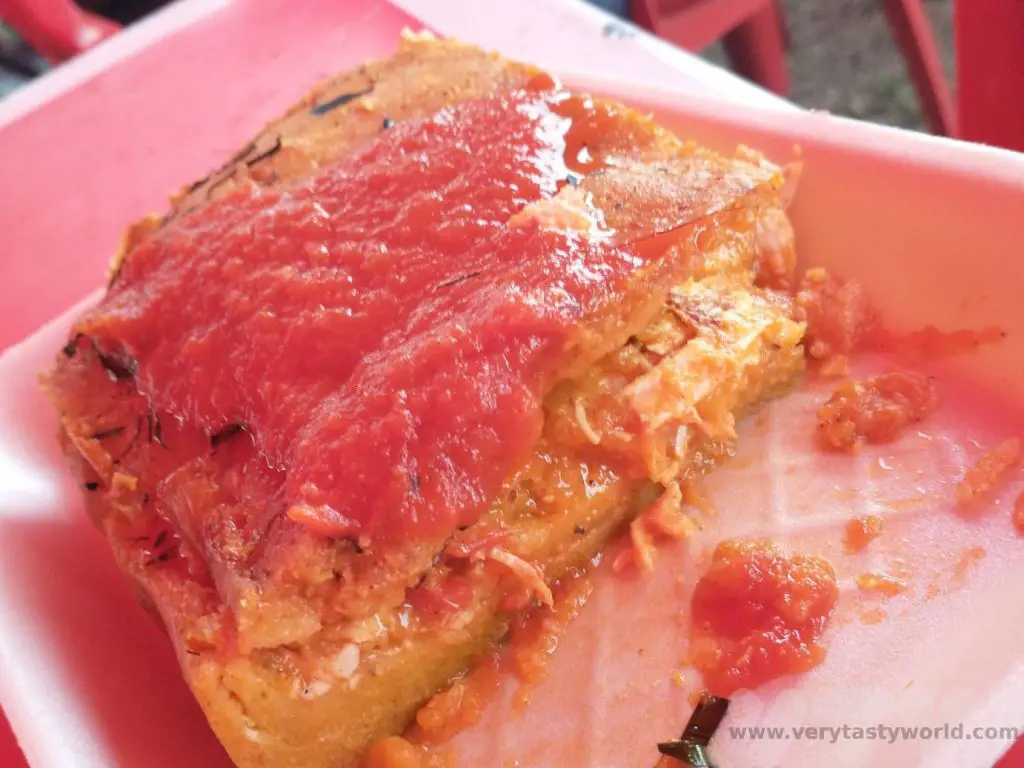
It is a great privilege to be able to join local festivals when travelling. Day of the Dead in Campeche was perfect for us as it was a much smaller, more intimate celebration than in the big cities and we were really welcomed.
And although the Day of the Dead imagery is macabre it is very much a day of joy.
Related Posts You May Enjoy

- Best Time To Visit Machu Picchu 2024 Update
- A 2 Week Patagonia Itinerary
- Day of the Dead in Campeche
- A Galapagos Land Based Itinerary
- RECIPE: How to Make Costa Rica’s Gallo Pinto
- A Tasty Puebla Food Tour
- Costa Rica Wildlife Sanctuary – Caño Negro
- Visit Torres del Paine National Park in Patagonia
- Atacama Desert Itinerary
